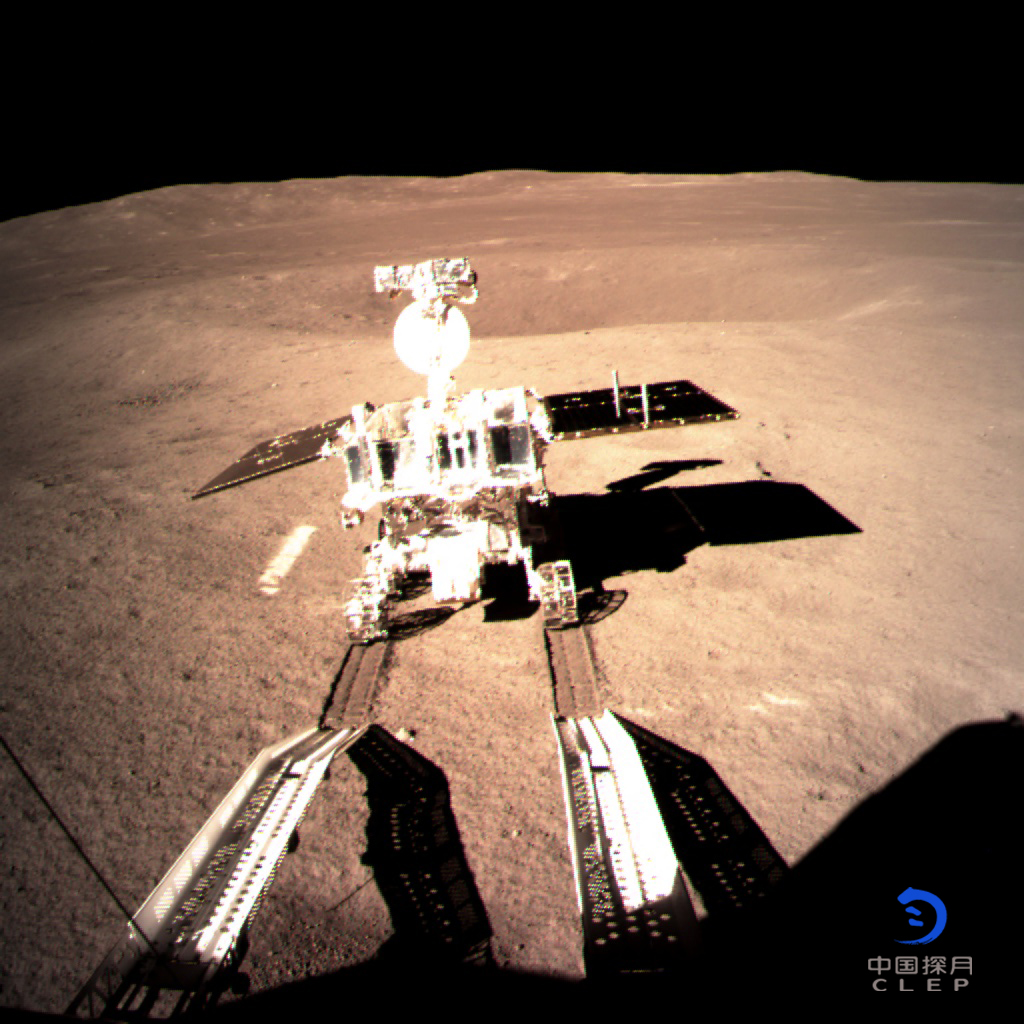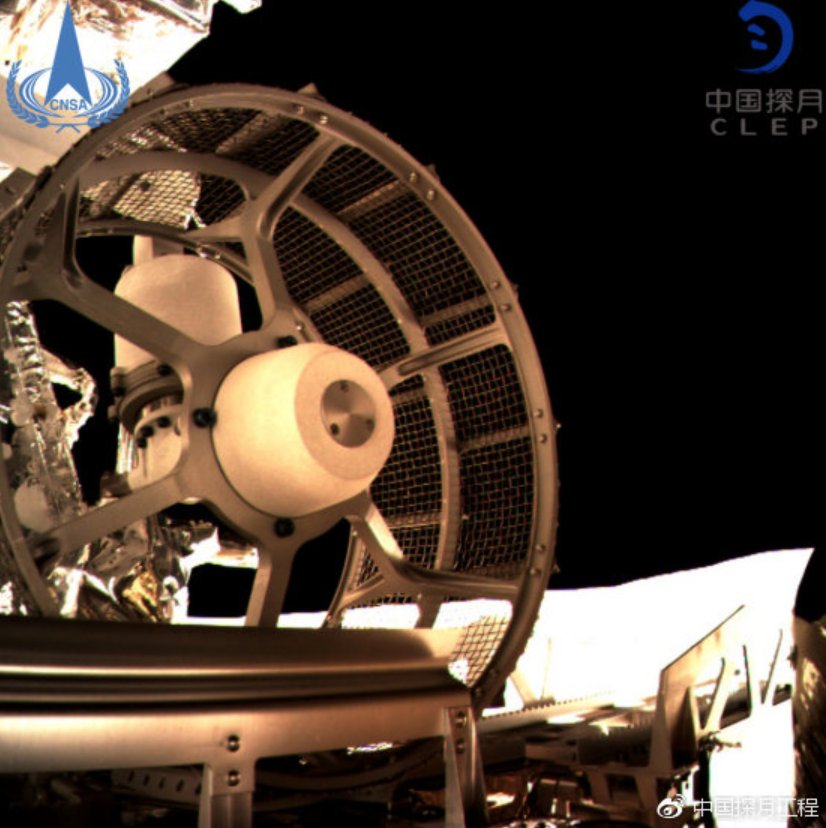China's Yutu 2 Rover Is Driving on the Far Side of the Moon
The lunar far side now has its first set of rover tracks.
Last night (Jan. 2), China's robotic Chang'e 4 lander-rover duo pulled off the first-ever soft touchdown on the moon's largely unexplored far side. And today (Jan. 3), the rover rolled onto the gray dirt floor of the 115-mile-wide (186 kilometers) Von Kármán Crater, creeping down twin ramps from a previous position atop the stationary lander.
Also today, China revealed the name of the rover: "Yutu 2." This moniker may not be terribly creative, but it makes a lot of sense. The original Yutu rover touched down, along with a lander, on the moon's near side in December of 2013 on the Chang'e 3 mission. And Chang'e 4 was originally designed as a backup for Chang'e 3, so the two missions share a lot of hardware. [China's Chang'e 4 Moon Farside Landing in Pictures]

Yutu 2 and its lander companion will conduct the first in-depth science investigations on the far side. The two craft tote four science instruments each, and these will enable the pair to characterize the surface and near subsurface of Von Kármán in great detail. This crater lies within an even larger impact feature, the 1,550-mile-wide (2,500 km) South Pole-Aitken Basin.
The lander also carries a biological experiment: a small tin containing silkworm eggs and the seeds of several plant species, including potatoes. Mission team members aim to study how these organisms grow and develop in the low-gravity lunar environment.

The lander and Yutu 2 cannot beam their data home to Earth directly, because the moon's far side always faces away from our planet. Indeed, this communication complication is a big reason why the far-side surface had not previously welcomed any functioning spacecraft (though a few probes have crashed there over the years).
So, the Chang'e 4 duo will rely on a relay satellite called Queqiao, which China launched to a gravitationally stable point beyond the moon in May 2018. From its vantage point, Queqiao can keep Yutu 2, the lander and Earth all in sight at the same time.
Get the Space.com Newsletter
Breaking space news, the latest updates on rocket launches, skywatching events and more!
Chang'e 4 is the latest step in China's ambitious program of robotic lunar exploration, with the satellite taking its name from a moon goddess in Chinese mythology. (In this mythology, by the way, Yutu is the pet rabbit of Chang'e.) The Chang'e 1 and Chang'e 2 missions sent orbiters to the moon in 2007 and 2010, respectively, and Chang'e 3 aced its near-side touchdown in late 2013.
Then, in October 2014, the Chang'e 5T1 mission launched a prototype capsule on an eight-day trip around the moon. The main goal was to help prove out technology required for the Chang'e 5 sample-return mission, which could launch as early as this year.
Mike Wall's book about the search for alien life, "Out There" (Grand Central Publishing, 2018; illustrated by Karl Tate) is out now. Follow him on Twitter @michaeldwall. Follow us @Spacedotcom or Facebook. Originally published on Space.com.
Join our Space Forums to keep talking space on the latest missions, night sky and more! And if you have a news tip, correction or comment, let us know at: community@space.com.

Michael Wall is a Senior Space Writer with Space.com and joined the team in 2010. He primarily covers exoplanets, spaceflight and military space, but has been known to dabble in the space art beat. His book about the search for alien life, "Out There," was published on Nov. 13, 2018. Before becoming a science writer, Michael worked as a herpetologist and wildlife biologist. He has a Ph.D. in evolutionary biology from the University of Sydney, Australia, a bachelor's degree from the University of Arizona, and a graduate certificate in science writing from the University of California, Santa Cruz. To find out what his latest project is, you can follow Michael on Twitter.









